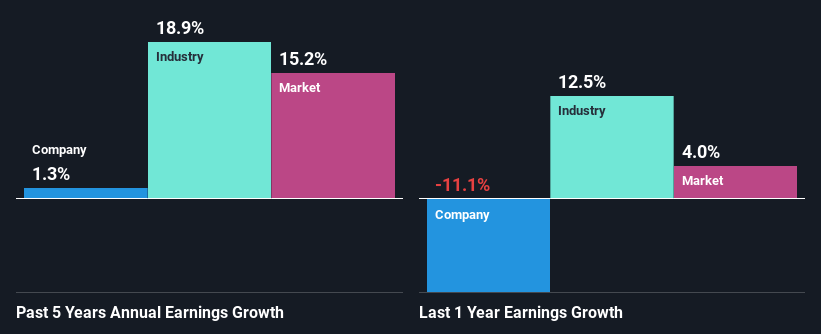Does The Market Have A Low Tolerance For MIND C.T.I. Ltd's (NASDAQ:MNDO) Mixed Fundamentals?
With its stock down 3.0% over the past three months, it is easy to disregard MIND C.T.I (NASDAQ:MNDO). We, however decided to study the company's financials to determine if they have got anything to do with the price decline. Fundamentals usually dictate market outcomes so it makes sense to study the company's financials. Specifically, we decided to study MIND C.T.I's ROE in this article.
Return on equity or ROE is a key measure used to assess how efficiently a company's management is utilizing the company's capital. In short, ROE shows the profit each dollar generates with respect to its shareholder investments.
View our latest analysis for MIND C.T.I
How Do You Calculate Return On Equity?
The formula for return on equity is:
Return on Equity = Net Profit (from continuing operations) ÷ Shareholders' Equity
So, based on the above formula, the ROE for MIND C.T.I is:
23% = US$5.0m ÷ US$22m (Based on the trailing twelve months to June 2023).
The 'return' is the income the business earned over the last year. So, this means that for every $1 of its shareholder's investments, the company generates a profit of $0.23.
Why Is ROE Important For Earnings Growth?
So far, we've learned that ROE is a measure of a company's profitability. Depending on how much of these profits the company reinvests or "retains", and how effectively it does so, we are then able to assess a company’s earnings growth potential. Assuming all else is equal, companies that have both a higher return on equity and higher profit retention are usually the ones that have a higher growth rate when compared to companies that don't have the same features.
MIND C.T.I's Earnings Growth And 23% ROE
First thing first, we like that MIND C.T.I has an impressive ROE. Second, a comparison with the average ROE reported by the industry of 9.9% also doesn't go unnoticed by us. Given the circumstances, we can't help but wonder why MIND C.T.I saw little to no growth in the past five years. So, there could be some other aspects that could potentially be preventing the company from growing. These include low earnings retention or poor allocation of capital
We then compared MIND C.T.I's net income growth with the industry and found that the company's growth figure is lower than the average industry growth rate of 19% in the same 5-year period, which is a bit concerning.
The basis for attaching value to a company is, to a great extent, tied to its earnings growth. It’s important for an investor to know whether the market has priced in the company's expected earnings growth (or decline). By doing so, they will have an idea if the stock is headed into clear blue waters or if swampy waters await. Is MIND C.T.I fairly valued compared to other companies? These 3 valuation measures might help you decide.
Is MIND C.T.I Using Its Retained Earnings Effectively?
The high three-year median payout ratio of 91% (meaning, the company retains only 8.8% of profits) for MIND C.T.I suggests that the company's earnings growth was miniscule as a result of paying out a majority of its earnings.
Additionally, MIND C.T.I has paid dividends over a period of at least ten years, which means that the company's management is determined to pay dividends even if it means little to no earnings growth.
Summary
On the whole, we feel that the performance shown by MIND C.T.I can be open to many interpretations. While the company does have a high rate of return, its low earnings retention is probably what's hampering its earnings growth. Until now, we have only just grazed the surface of the company's past performance by looking at the company's fundamentals. To gain further insights into MIND C.T.I's past profit growth, check out this visualization of past earnings, revenue and cash flows.
Have feedback on this article? Concerned about the content? Get in touch with us directly. Alternatively, email editorial-team (at) simplywallst.com.
This article by Simply Wall St is general in nature. We provide commentary based on historical data and analyst forecasts only using an unbiased methodology and our articles are not intended to be financial advice. It does not constitute a recommendation to buy or sell any stock, and does not take account of your objectives, or your financial situation. We aim to bring you long-term focused analysis driven by fundamental data. Note that our analysis may not factor in the latest price-sensitive company announcements or qualitative material. Simply Wall St has no position in any stocks mentioned.

